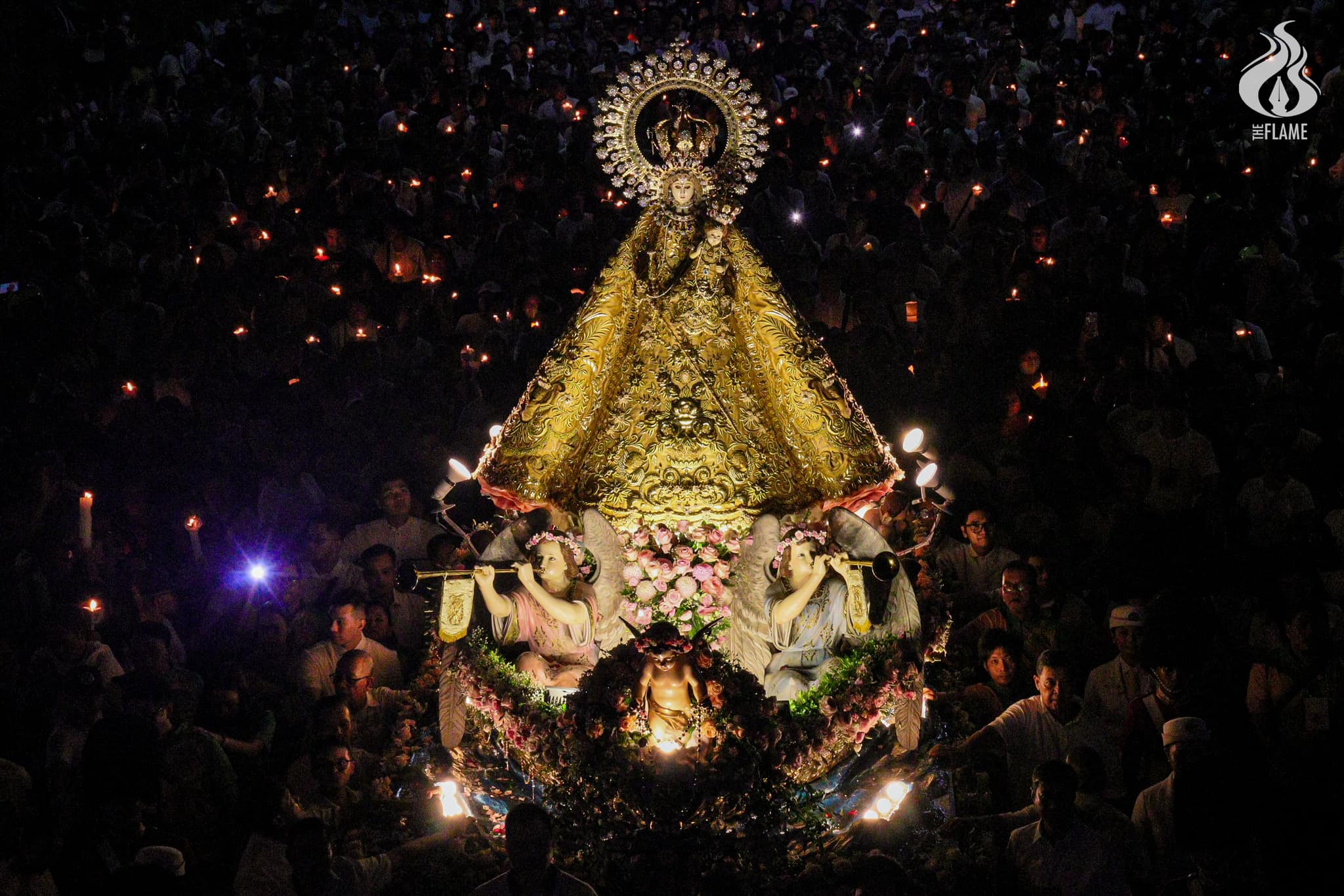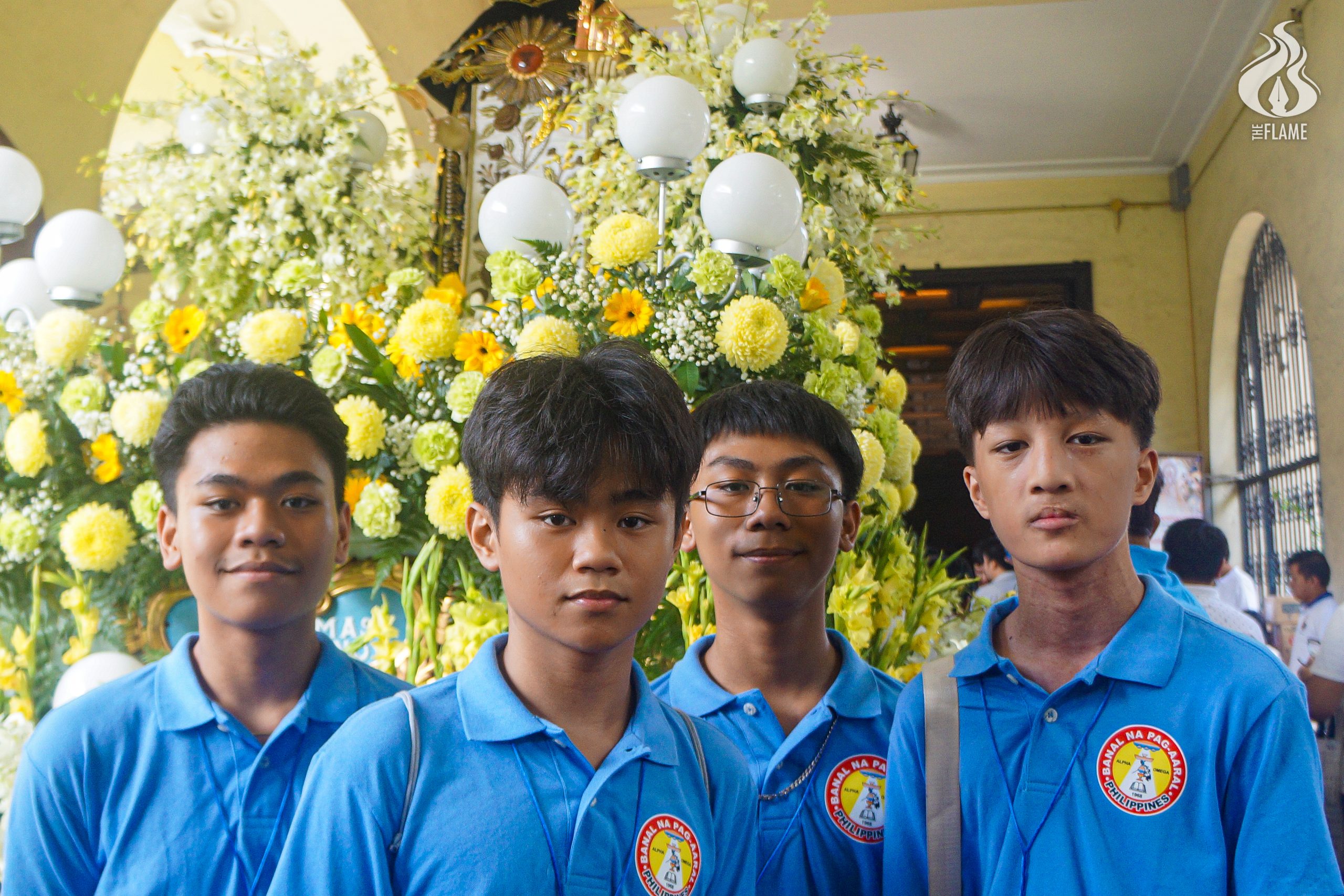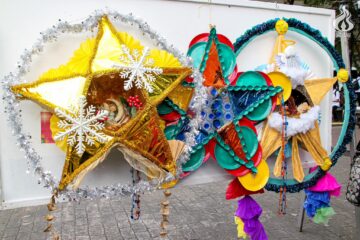THE FLAME of the centuries-old devotion to Our Lady of the Rosary La Naval de Manila has not been extinguished by the winds of change and secularism, a fervor made evident by the hundreds of thousands of her children who flock to the streets of Quezon City every second Sunday of October to honor her.
Since the miraculous 17th century naval victories in Manila that saw the outnumbered Filipino and Spanish forces vanquishing the more formidable Protestant Dutch fleet, devotees have been showing their affection to the La Gran Señora de Filipinas, viewing her as their guiding light as they traverse life’s tempests.
Over 200,000 devotees participated in the grand procession last Oct. 13, according to the Quezon City Police District.
Cries of ‘Viva La Virgen’ and ‘Viva Virgen de La Naval’ are expected to reverberate inside the Santo Domingo Church in the coming years as a new generation of devotees have embraced the venerable tradition that reflects the deeply rooted Catholicism in the Philippines.
The young La Naval devotees inherited the practice from their elders, whose answered prayers have been attributed to the intercession of the Virgin Mary. However, some of them have their own experiences of being touched by her maternal care.
One of them is 30-year-old Chad Losanta, who once stared death in the eye after being struck by an unexplainable disease.
Losanta lived through days when every breath felt like it could be his last, drawing invisible tally marks on the ceiling with shallow breaths as his ink and his trembling, shedding fingers as his pen. He experienced shortness of breath but not of faith.
His faith and determination allowed him to recover from his health condition and when the day of his release from the hospital finally arrived, he rushed straight to Santo Domingo Church, the home of the image.
“I was there, my skin peeling away. I was gasping for breath, pleading with her (Our Lady of La Naval) to help me—to heal me,” Losanta said.
With his skin peeling away like his determination to overcome his struggle, Losanta felt his tears fell as he whispered a prayer. For him, it was not just a prayer. It was a final, desperate plea – his own Hail Mary.
Gratitude and heritage

Losanta is now propagating the devotion to the Virgin Mary as his way of thanking her for her prayers and preserving a key cultural heritage.
“It doesn’t mean that if you are Gen Z or Gen Alpha, you are a different human species. You always have your heritage with you, and to go to Sto. Domingo, that is to acknowledge your heritage. That’s to acknowledge your culture, your identity, your Catholic, your Filipino self,” he said.
Another young devotee, 22-year-old nursing student Bismarck Garcia, believes that nurturing faith should start with the youth.
“In the long run, we will inherit this devotion, and eventually, we’ll be the ones to carry it forward,” Garcia said.
“I think it should begin with us, and we should be the ones to spread the devotion to Our Lady (La Naval). Of course, along with Our Lady, Jesus must always be at the center,” he added.
For some young devotees, the La Naval tradition is a family affair that encouraged them to become involved in Church activities.
“I never lost what my parents, and even my grandparents, taught me. From the very beginning, I’ve had my devotion … it never left me; in fact, it only strengthened as I grew older and became more active in the church,” 24-year-old JM Daradal said.
The practice introduced to him at home has been passed on to members of youth ministries, allowing him to find a bigger family under the care of the Virgin Mary.
A former chair of the Sangguniang Kabataan or youth council of Barangay Onse in San Juan, Daradal brings the devotion to the grassroots level, which has so far attracted over 80 active young members.
Such spiritual cliques proved to be effective in encouraging the veneration of Our Lady of La Naval, which depicts the Virgin Mary in regal vestments and carrying the infant Jesus and a rosary.
It was in the Sto. Domingo Parish Youth Ministry that 23-year-old Lyndon Red Mata became who he is today. Beyond the lessons of devotion, Mata learned how to lead the youth towards a life of goodness and faith.
“Even when I was in high school, I encouraged my friends to go to the adoration chapel after class. There were even times when they voluntarily went even if I was not with them,” Mata, a first year Thomasian Communication student, said.
“In a way, the things we pray for would be given to us by God. He will touch someone to lead us into serving Him through the Church.”
Expressing the faith through art

While some Marian devotees use their people skills to preserve the tradition, others pay homage to the Virgin Mary through their talents.
Justine Uel Abit, an Advertising Arts sophomore at UST, believes that art is a powerful medium to express one’s faith. He has wielded his black pen for years, depicting vivid images of the saintly entourage that accompany the Marian image.
Abit recounted how being a La Naval devotee helped him reach a place that he had only once prayed for.
After passing the entrance exam at UST, he returned to Santo Domingo Church with a great gift.
“After we signed the papers through the contract for my scholarship, I immediately went here (Sto. Domingo Church) to thank Our Lady of La Naval. That’s why my devotion to La Naval has greatly impacted me as a UST student,” Abit said.
A pause from a fast-paced life

While the fast-paced digital age has disconnected many young people from cultural traditions and spiritual matters, others regard the feast of the La Naval as a way to reflect on their relationship with God.
Long-time devotee and law student A.M. Manaligod found solace in his devotion to Our Lady of La Naval, saying it has kept him still despite the difficulties he faced.
The 22-year-old devotee realized that life is cruel most of the time and is akin to volatile tidal waves. He found the permanence he has long yearned for in religious practices.
“With how fleeting this world is and whatnot, when we think that nothing matters, it is a religion [and] devotion that would display that there are many things worth living for,” Manaligod said.
In a rapidly changing world, devotees of Our Lady of Naval remain certain that they have a mother who cares for them and who constantly asks God to help them as they navigate through life’s rough seas.
The faith, which is being nourished by the country’s deep Catholic heritage, family ties, the religious fervor of the youth and, ironically, by changes that make one long for a pause from the noise of everyday living, is what keeps the La Naval tradition alive. F – Jade Alecksandra Bagas and Ron Kyle Gabrielle Reyes with reports from John Martin Revilla




